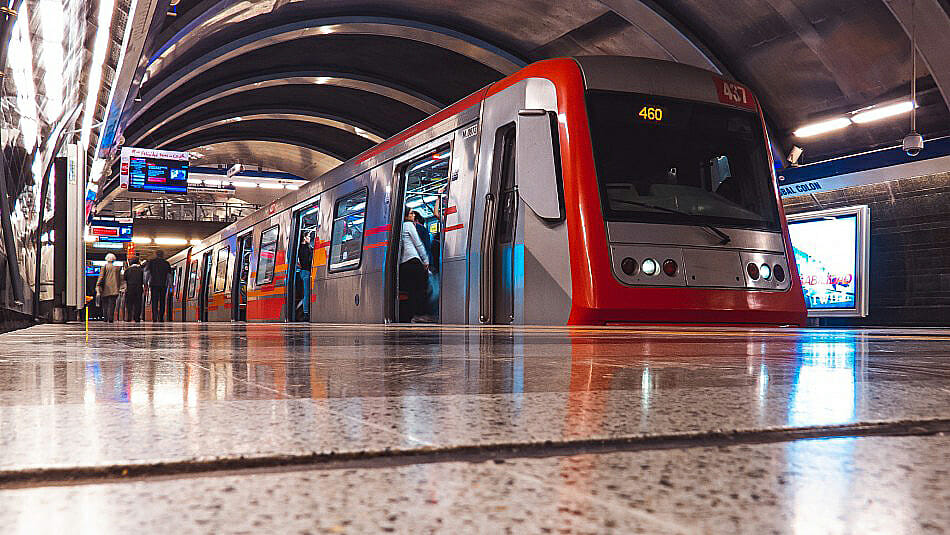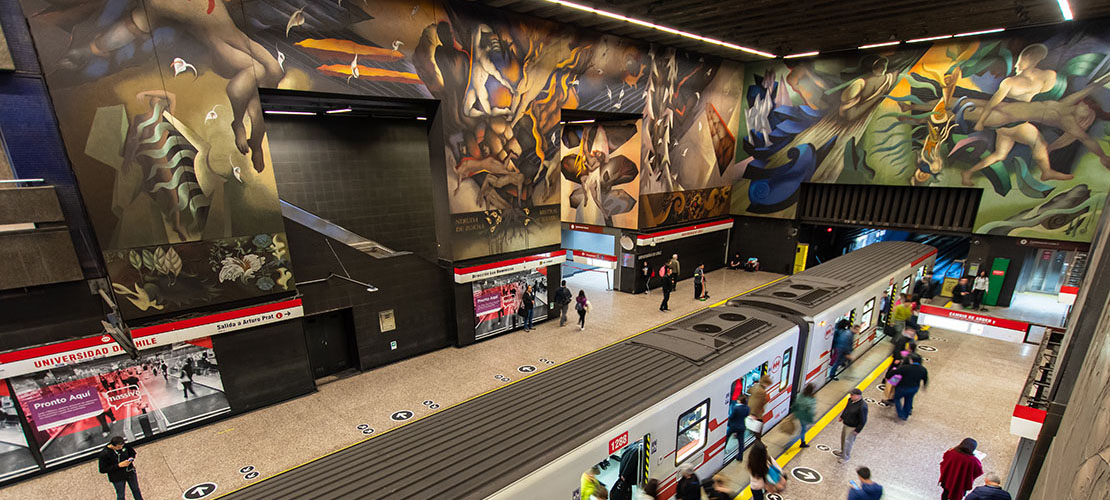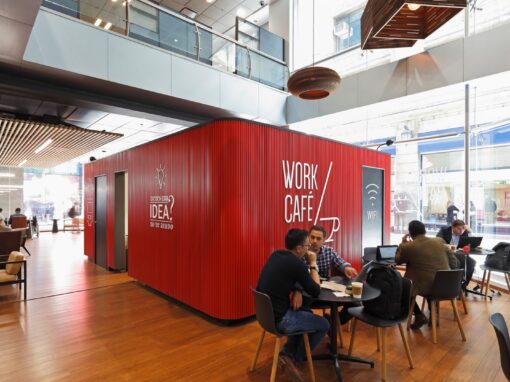A quick guide to getting around the city
Santiago de Chile boasts an efficient, extensive, and modern metro system, serving as the backbone of the city’s public transportation. With multiple lines, connections across different neighborhoods, and links to other transport options, the Santiago Metro not only makes daily commuting easier but is also a fantastic way to explore the city.
Whether you’re an international student or from another region of Chile, this guide will help you understand how the metro works, key transfer points, and some practical tips to make the most of your journeys.
Santiago Metro lines: Discover the city underground
The Santiago Metro features 7 active lines, covering much of the city and connecting key areas:
- Line 1 (Red): The oldest and busiest line, running east to west through Santiago. It connects neighborhoods like Las Condes, Providencia, and Santiago Centro, with major stations such as Los Dominicos, Tobalaba, Baquedano, and Universidad de Chile. Perfect for those studying or working in central areas.
- Line 2 (Yellow): Runs north to south, passing through neighborhoods like Recoleta and San Miguel. Great for reaching places like Mercado Central and Parque de los Reyes, a popular green space for relaxation and sports.
- Line 3 (Brown): One of the newest lines, crossing east to west and connecting Ñuñoa, Providencia, and Quilicura, with stops at Plaza Egaña and downtown Santiago.
- Line 4 (Blue): Connects southeastern Santiago, running through La Florida, Ñuñoa, and Las Condes, with important stations like Plaza Egaña and Tobalaba.
- Line 4A (Light Blue): Covers southern parts of the city with fewer, more specific stops—ideal for certain residential areas.
- Line 5 (Green): Runs east to west, passing through Santiago Centro, Ñuñoa, and stretching to Maipú. Includes key stations like Plaza de Armas and Santa Ana.
- Line 6 (Purple): The newest and most high-tech line, linking Providencia, Ñuñoa, and Cerrillos, with advanced features and stations such as Inés de Suárez and Ñuñoa.

Key transfer points
The Metro’s smart design allows quick and easy transfers between lines. Here are the main transfer hubs:
- Tobalaba: Connects Line 1 and Line 4 — ideal for moving between Providencia and southeastern Santiago.
- Baquedano: Connects Line 1 and Line 5 — located in the heart of Santiago, near Parque Forestal and Parque Bustamante, on the border of Santiago Centro and Providencia.
- Plaza Egaña: Connects Line 3 and Line 4 — perfect for those living in Ñuñoa who need access to southern areas.
- Los Leones: Connects Line 1 and Line 6 — widely used to move between Providencia and Ñuñoa.
The Bip! Card and metro fares
To ride the Santiago Metro, you’ll need a Bip! Card, which also works on the city’s bus system (Red). You can top up your card at any metro station or at authorized points around the city.

Fare categories:
- Peak hours: Higher fares apply during morning and evening rush hours.
- Off-peak hours: Moderate fares during less busy times of the day.
- Low-demand hours: Cheaper fares at night and on weekends.
Tip: If you combine a metro ride with a bus trip within a two-hour window, the system automatically applies a discount, making your journey more affordable.
Useful tips for using the Santiago Metro
- Avoid rush hours: Stations can get very crowded between 7:00–9:00 AM and 6:00–8:00 PM. If possible, plan your trips outside these times.
- Plan your route: Use tools like Google Maps or the official Santiago Metro app to optimize your travel.
- Explore nearby attractions: Some metro stations are close to iconic spots, such as:
- Cerro Santa Lucía from Santa Lucía Station (Line 1)
- Bellavista neighborhood from Baquedano Station (Line 1 and Line 5)
- Museum of Memory and Human Rights from Quinta Normal Station (Line 5)
Metro and neighborhoods: Choosing where to live
Thanks to its wide coverage, the metro is a major factor when deciding where to live in Santiago:
- Santiago Centro: Served by Lines 1, 2, 3, and 5 — ideal for getting around quickly.
- Ñuñoa: Connected by Lines 3 and 6 — peaceful yet well-connected.
- Providencia: Served by Lines 1, 5, and 6 — one of the best areas for students and young professionals.
- Las Condes: Accessible via Lines 1 and 4 — modern, safe, but with a higher cost of living.
- Recoleta: Connected by Lines 2 and 3 — vibrant and authentic, close to Bellavista and Mercado Central.
The Santiago Metro is much more than a means of transportation — it’s a reflection of the city’s diversity and spirit, connecting people from all walks of life. Its modern infrastructure and constant maintenance make it one of the cleanest and most efficient metro systems in Latin America, offering a pleasant experience whether you’re commuting daily or discovering the city for the first time.
Whether you’re heading to your university or workplace, exploring lively neighborhoods, or visiting cultural landmarks, the metro is your best ally for moving around Santiago comfortably, efficiently, and reliably.




